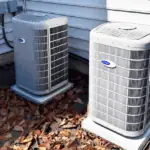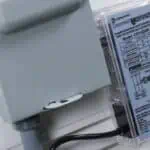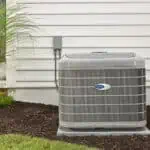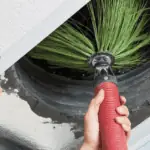SEER2 The New Efficiency Standard of 2023
What are SEER regulations?
Did you know that HVAC equipment, like air conditioning units, gas furnaces, condensers, and more, are rated for efficiency? These efficiency standards are known as SEER (Seasonal Energy Efficiency Ratio) ratings. Think of it as something like your car’s fuel efficiency, except in this case. You’re measuring comfort per energy dollar spent, not miles per gallon. And like an MPG rating, the higher the number, the better. With higher SEER ratings, your heating and cooling equipment will have a smaller carbon footprint and save you money on energy bills.
By 2023, new SEER standards, known as SEER2, are going into effect. This can affect the equipment available for use in your home.
Let’s examine the old SEER standards and then look at the new ones – how they’ve changed and affected you when upgrading your HVAC equipment.
What is the current SEER standard?
The Federal government set the first SEER standards in 1975. However, there were no rules regarding minimum SEER ratings for air conditioning and HVAC equipment until 1987,
Those requirements aren’t the same across the nation. There are three different regional requirements, dependent upon geography: For our customers in New Jersey, the North is our region.
Within each region, three different ratings must be met for air conditioning, split systems, heat pumps, and other equipment. These will be different starting in 2023.
So, what’s changing?
Two primary changes are coming in 2023.
- The techniques used for the SEER2 rating system will be different. Without getting too technical, the methods used will more closely reflect real-world conditions. This involves measuring the efficiency of the units with different external static pressure requirements than those used previously.
- The ratings are increasing from 13 for air conditioners. For the Northern region, the new air conditioning standard will be 14. That means new air conditioning systems will use less electricity than older equipment.
- The ratings are increasing from 14 for heat pumps. For the Northern region, the new heating standard will be 15. That means new heat pump systems will use less electricity than older equipment.
While this may be a decrease in efficiency standards, because of the new testing requirements, equipment measured with these standards (SEER2) is significantly more efficient than those with a similar rating measured by the old (SEER) standards.
What kinds of products are affected by SEER2 regulations?
What types of products are covered by the new SEER2 guidelines? Here’s a short list.
Air conditioner condensing units
Air conditioning condensing units are the outdoor portion of a split HVAC system. They’re often paired with a coil and air handler to comprise a split AC unit.
Heat pumps
Heat pumps operate to both warm and cool the air inside your home by tapping into differences in the temperature between indoors and outdoors. They’re highly efficient and are an integral part of most modern HVAC systems for the home.
Gas furnaces
Gas furnaces are used for heating, and the SEER2 requirement also covers them for energy-efficient systems.
As the list suggests, air conditioners aren’t only covered by SEER2 requirements. HVAC contractors must meet SEER2 requirements when meeting consumer demand for new and improved HVAC systems.
How do SEER2 requirements affect you?
HVAC manufacturers are constantly improving the efficiency standard of their equipment, and that trend in efficiency growth will increase in the future. New technology will continue to make AC units and other HVAC equipment more efficient throughout the industry.
Companies that install air conditioning and other HVAC equipment must ensure that all equipment installed in the future, starting in 2023, meets the new standards.
Older inventory that doesn’t meet the new requirements cannot be sold or installed after January 1, 2023, so if you’re looking to have work done on your HVAC system, either to reduce energy costs or to replace defective equipment, it’s probably wise to check with HVAC business owners now to see how prices on gear may be affected by the new standards.
Let Air Professionals Help.
Understanding the new requirements and comparing equipment – AC units, heat pumps, condensers, self-packaged units, mini-split systems, and more – can be complicated. That’s where it’s smart to work with a trusted HVAC Contractor.
Air Professionals has the expertise necessary to ensure you get the right equipment for cooling and heating your home. Their HVAC technicians will work with you to explain the benefits of different types of gear and how well they meet the new requirements for energy efficiency.
Autumn is just around the corner, with its official start on September 23rd! It feels like just yesterday we were…
Read MoreIf you want to prolong the life of your air conditioner and increase your home’s safety, you should have an HVAC surge protector installed before warmer weather comes.
Read MoreIntroduction Into Mini-Split Are you tired of battling with uneven temperatures in your home? Does your sunroom feel like a…
Read MoreFind out if a heat pump is the right fit for your home and why they’re gaining popularity in the United States.
Read MoreExpert advice for homeowners – Have your ducts cleaned every few years. Very necessary for homes with pets, and smokers.
Read More





